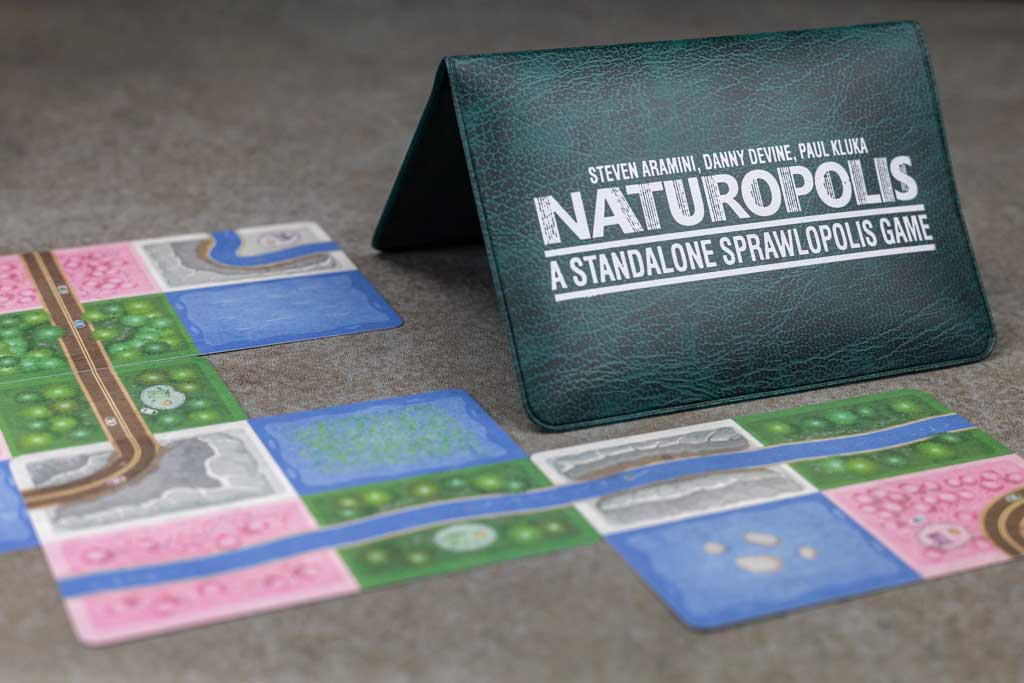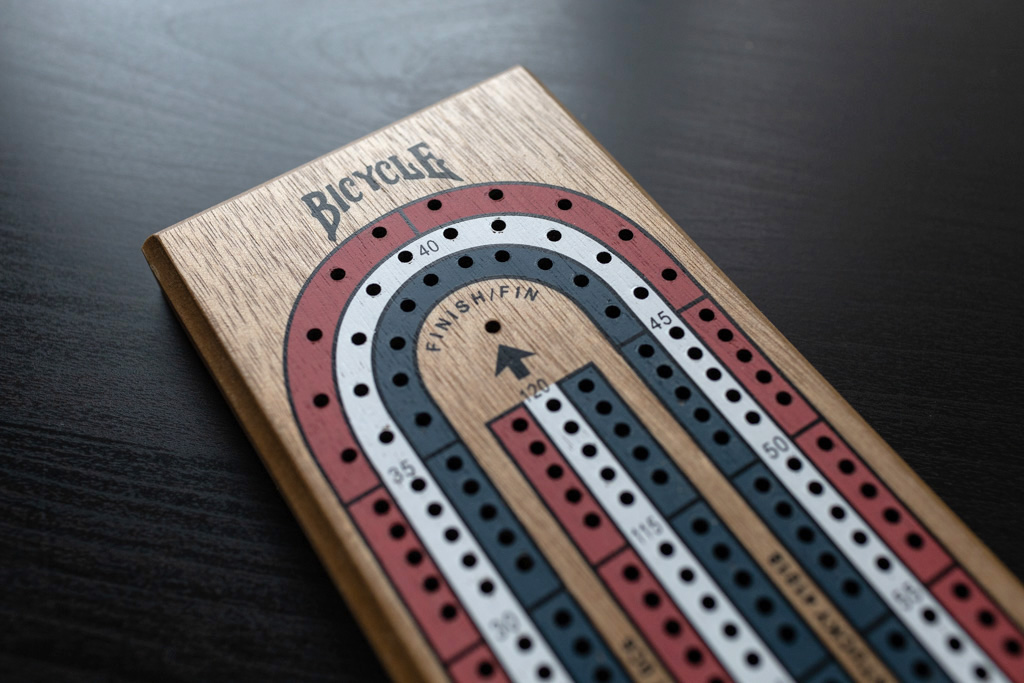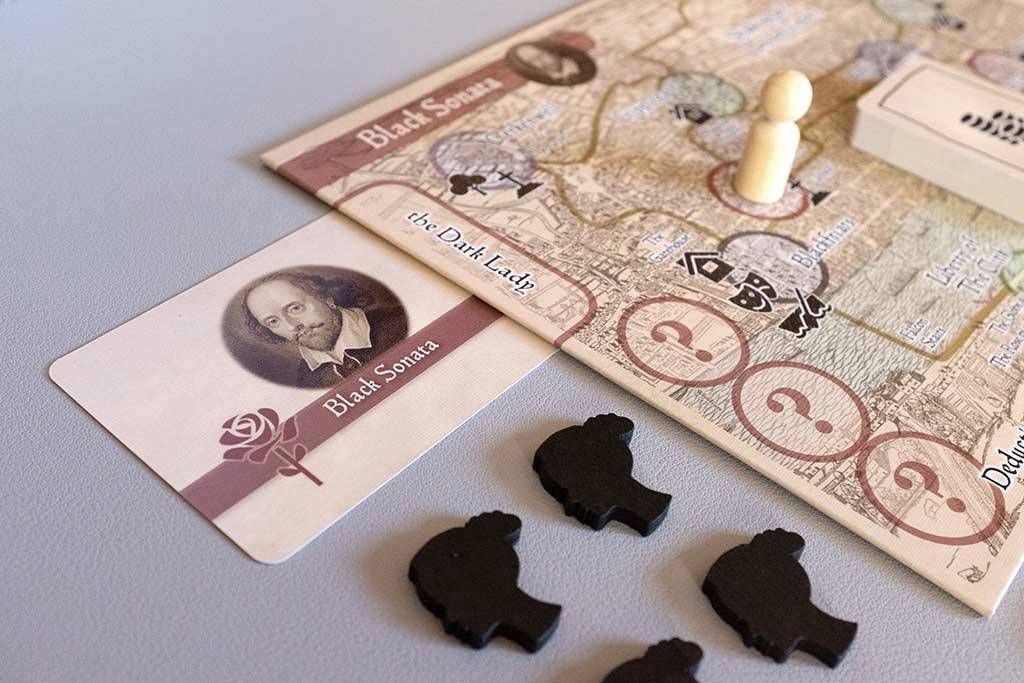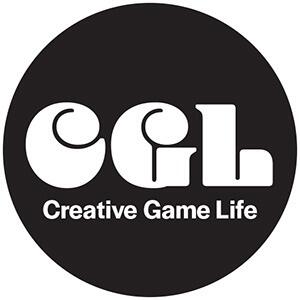Hive is one of those games I bring to a lot of places because it plays anywhere, carries easily, and can be taught in minutes. But simultaneously it’s one of the most mind-crunching strategy games that I own. It’s a game that leaves very little room for error and rewards those who can plan ahead. I’ll admit that I get beat often in this game and especially if I am playing on Board Game Arena. But it’s simple enough that I’ll always go one more round to see if I can get my head around a strategy.
The game is played on any surface using hexagonal tiles that representing types of insects. The objective of the game is to surround the opponent’s queen bee tile with your own pieces. It’s a very thinky game dude to many strategies that can be employed and the constantly changing game “board.”

The History of Hive
Hive is a board game that was first published in 2001 by John Yianni, an Australian game designer. He says he first came up with the idea in the 1980’s when he wondered if he could create a game like chess but without a board. His love for nature coincided with an interest in abstract strategy games to create the initial concept. He began working on the game in the late 1990s and spent several years developing the concept and playtesting different versions of the game before finally publishing it in 2001.
Yianni has said that he was inspired by the hexagonal shape of honeycomb and the movement patterns of insects when designing the game. He also wanted to create a game that was easy to learn but difficult to master, with a high level of replayability. To achieve this, he made the rules of the game simple, but also included many different strategies that could be employed by players.
Yianni spent a lot of time playtesting the game with different people to get feedback and improve it, and took inspiration from other classic strategy games like chess, Go and Othello. In the final version of the game, the Hive tiles are made out of wood. This adds a unique tactile dimension to the game and makes them durable enough to withstand the test of time.The game went on to win several awards including the Mensa Select award in 2002 and the As d’Or – Jeu de l’Année award in 2003.

How to Play Hive
The objective of the game is to surround the opponent’s queen bee tile with your own pieces, trapping it so that it can no longer move. Here’s how the game is played:
- Each player starts with 11 tiles of different insects, including a queen bee, a beetle, a spider, a grasshopper, a soldier ant, and a ladybug.
- Players take turns placing their pieces on the board. The queen bee must be placed on the board first, and can only be moved after all other pieces have been placed.
- Players can move any piece at any time, as long as the movement follows the rules of the game. The rules for each piece’s movement are explained in the previous answer.
- The game board is constantly changing as pieces are moved and added, and players must use strategic thinking to outmaneuver their opponent.
- The game ends when one player successfully surrounds the opponent’s queen bee tile with their own pieces, trapping it so that it can no longer move.
- The player who surrounds the opponent’s queen bee tile wins the game.
How Pieces Move
Each piece in the game of Hive has its own unique movement pattern:
- The Queen Bee is the most powerful piece in the game, but also the most restricted in its movement. It can only move one space at a time, but can move in any direction.
- The Beetle can move any number of spaces in any direction, but it can only move on top of other pieces. It cannot move to an empty space on the board.
- The Spider can move any number of spaces in any direction, but it can only move along the edges of the hexagons.
- The Grasshopper can move any number of spaces in a straight line, jumping over any pieces in its way, but it cannot move on top of other pieces.
- The Soldier Ant can move any number of spaces in any direction, but it can only move along the edges of the hexagons.
- The Ladybug can move one space in any direction, but it can only move on top of other pieces.
Basic Strategies
- Try to control as much of the board as possible by placing your tiles in strategic positions. This will give you more options for your next moves and make it harder for your opponent to move their pieces.
- Pay attention to the opponent’s queen bee: Your goal is to surround the opponent’s queen bee with your own tiles. Keep an eye on the opponent’s queen bee and try to block it from moving to open spaces on the board.
- Use the special abilities of each tile: Each tile in Hive has a unique ability, such as being able to move multiple spaces or being able to move in a specific way. Make sure to use these abilities to your advantage and try to catch your opponent off guard.
- Be mindful of your own queen bee: While you’re trying to surround your opponent’s queen bee, you also need to protect your own queen bee. Make sure to place your tiles in such a way that your queen bee is not easily surrounded.
- Control the center of the board: The center of the board is a key area in Hive, as it allows for greater mobility of the tiles.
- Don’t waste moves: Every move you make is important, so try to make the most of each turn. Don’t waste moves by placing tiles in positions that don’t benefit you.
Strong Opening Moves
- Spider–Bee–Ant – A flexible opening that allows the Bee movement possibilities while also introducing a powerful Ant that can move as needed to block or trap.
- Bee–Spider–Spider – An aggressive opening that allows the player the quickest opportunity to move. The Spiders can quickly block the opponent’s opening pieces.
Buy Hive Online
If you enjoy our content please consider supporting our site through these affiliate links:




